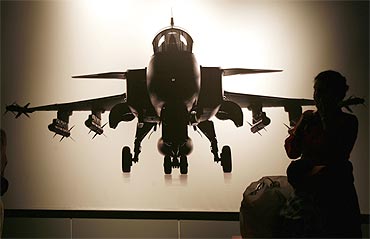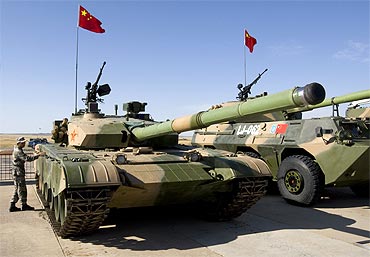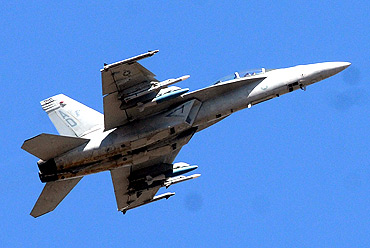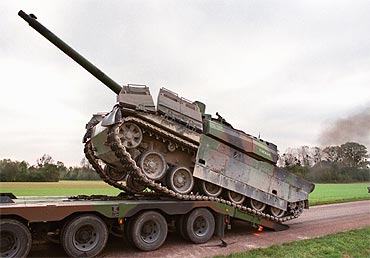 | « Back to article | Print this article |
India pushes China to second spot
India has emerged as the world's largest arms importer, overtaking China which shares the second spot with South Korea followed by Pakistan, according to new data on international arms transfers published today by the Stockholm International Peace Research Institute.
"India received 9 per cent of the volume of international arms transfers during 2006-10, with Russian deliveries accounting for 82 per cent of Indian arms imports," it said in a comprehensive annual update of the SIPRI Arms Transfers Database. The four largest importers of conventional weapons in 2006-10 are located in Asia, the report said. India last topped the list in 1992.
India expected to keep the top spot for now
The share of the four countries are: India (9 per cent), China (6 per cent), South Korea (6 per cent) and Pakistan (5 per cent). These States have imported, and will continue to take delivery of, a range of major conventional weapons, in particular combat aircraft and naval systems, the report said.
India's arms import delivery volumes jumped 21 per cent from the prior five-year period, with aircraft accounting for 71 per cent of its imports. In the case of Pakistan, the report said the volume of imports increased 128 per cent. The report said India is expected to keep the top spot for the foreseeable future.
"Just from what they have already ordered, we know that in the coming few years India will be the top importer," said Siemon Wezeman of the SIPRI Arms Transfers Programme. Wezeman said Indian imports of major conventional weapons are driven by a range of factors. "The most often cited relate to rivalries with Pakistan and China as well as internal security challenges," he said.Unlike India, China builds up its domestic arms industry
"As an importer, India is demanding offsets and transfers of technology to boost its own arms industry, and, in order to secure orders, major suppliers are agreeing to such demands," he noted. India has unveiled plans to buy 126 fighter jets, 200 helicopters and large amphibious landing ships. A proposal to acquire a submarine is also in the pipeline.
India's defence budget for 2011-12 has been fixed at Rs 1.5 trillion, a 40 per cent increase from two years before. It imports roughly 70 per cent of its arms. China dropped to second place as it continued to build up its domestic arms industry, something India has so far failed to do, Wezeman said.
The average volume of worldwide arms transfers in 2006-10 was 24 per cent higher than in 2001-05. The major recipient region in 2006-10 remained Asia and Oceania (43 per cent of all imports), followed by Europe (21 per cent), the Middle East (17 per cent), the Americas (12 per cent) and Africa (7 per cent).
US remains the largest arms exporter
"There is intense competition between suppliers for big-ticket deals in Asia, the Middle East, North Africa and Latin America," said Dr Paul Holtom, director, SIPRI Arms Transfers Programme. The Eurofighter consortium (comprising Germany, Italy, Spain and the United Kingdom), France, Russia, Sweden and the US are competing for combat aircraft orders in these regions, with notable competitions in Brazil and India.
UAE: the third largest importer
The States of the Middle East and North Africa have been regarded as potentially lucrative markets for arms exporters, because of the resource revenue windfall of recent years, the report said. During 2006-10, arms imports were particularly high in the United Arab Emirates, Israel, Egypt and Algeria. Based on existing orders and known procurement plans, Saudi Arabian and Moroccan arms imports are expected to rise significantly in the coming years.
According to Wezeman, "Although Libya placed only limited orders for major conventional weapons following the lifting of the United Nations arms embargo in 2003, in recent years it has served as an excellent illustration of the competition between major suppliers France, Italy, Russia and the UK for orders."
However, there are limits to what supplier States are willing to provide, as shown by the imposition of UN Security Council arms embargoes on the supply of most major weapons to Iran in June 2010, and for a broad range of military and paramilitary equipment to Libya in February 2011.




